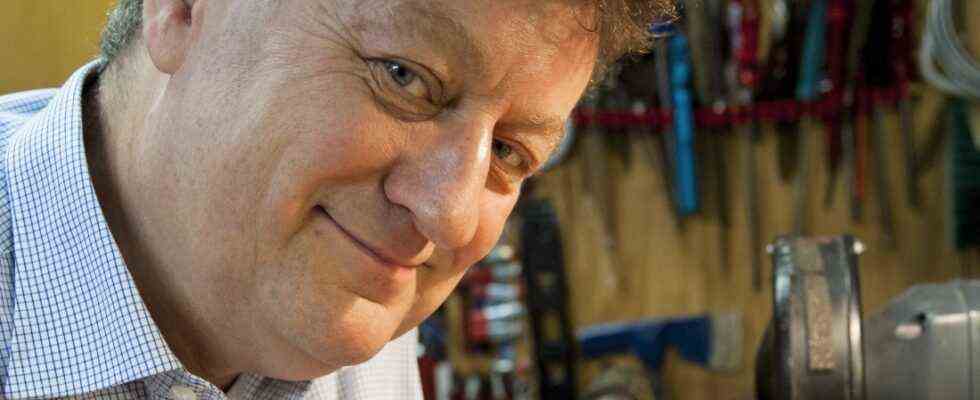Against the throwaway trend: When Wolfgang Heckl’s book “Die Kultur der Reparatur” was published in 2013, 80 addresses of repair cafes in Germany were listed in the appendix – now there are more than 1000, the enthusiastic repairer estimates.
SZ: Mr. Heckl, what was the last thing you repaired?
Wolfgang Heckl: Oh, I’m very proud to have just repaired shellac gramophone furniture from 1927.
What was wrong with it?
It actually stands on four legs, but one leg was missing. I turned a new leg on a lathe that dates back to 1923 and is operated with a belt. And that glued on.
Are these the items people go to a repair cafe with?
In my experience, people come there with their favorite treasures that are full of emotions. I recently saw an elderly couple in the traffic center in the Deutsches Museum, where our repairers also work. That came with a wooden magazine rack that had a broken leg.
It’s not like a new magazine rack is an expensive proposition.
Of course not. But the couple said they were hanging on the magazine rack because it was a wedding present from the husband to his wife fifty years ago. If such an object has been with you for a lifetime, you want to keep it.
Who else is going there?
The repair movement is a scene in which you know each other well. It is people who consciously decide against the throwaway society. Who ask themselves how they, how we all want to live in the future. And here it is very important how we use our resources.
So it’s not about getting a repair for little money?
No. Of course, I can also save money by repairing my vacuum cleaner, blender or toaster instead of throwing them away. I experienced this myself once when I wanted to repair the calcified cistern in our toilet.
What happened?
When I wanted to buy the necessary spare part in a plumbing shop, it was said that it no longer existed. I’d better rip out the whole box …
But do the tiles break in the process?
I told the seller that too. That was a good reason to re-tile the bathroom, he said. I was so annoyed about it that I looked for the spare part on the Internet and ordered it. A feeling of great satisfaction! It’s also about understanding the thing that I have in front of me, here, for example, the Archimedean buoyancy principle that controls the swimmer.
But why is this a skill that has been lost?
You see, when I bought my first car, a Fiat 127, 45 years ago, it was natural for me to buy the book “Now I Help Myself” with it. That was a whole series of books back then.
This knowledge is often no longer available today …
Today, of course, everything has become much more complicated, but it also has to do with the fact that the manufacturers of electronic devices no longer automatically add the “circuit diagram” when they buy, as they used to do with radios. That was a matter of course well into the 1960s, it was the core of a repair manual. Today, if at all, they only get the operating instructions, sometimes quite incomprehensibly machine-translated into German.
You think more people would be interested if they had more information?
Certainly. The other day I saw two young Turkish women who came into the workshop with an iron. You watched the repair work and wanted to understand exactly how it was done. They wanted to be able to fix it themselves next time.
Now the “right to repair” has been anchored in the EU directives …
Finally! Now it just has to be implemented nationally. It is to be introduced for companies that sell washing machines, televisions, coffee machines and the like. And if a repair is not possible, the device must at least be recyclable.
What are your hopes for the future?
That the young people of the Fridays for Future movement recognize how important the contribution of the repair movement is to the resource crisis. It’s not the day before yesterday. It’s easy to think because you might only see the old people who are bothering to fix something. We have to learn to do it like nature does.
What do you mean by that?
Nature manages to break down everything molecularly at the end of a life cycle – and recycle it. The problem is that we humans don’t do that.
An example?
Take the magnesium. We’ll get that out of the earth’s crust, and it’ll be running out. So if we have a device with a magnesium coating, if it’s broken and beyond repair, we can’t just burn it in the dump. We have to put it back into circulation. Thank goodness there are already initial research efforts in the area of polymers.

